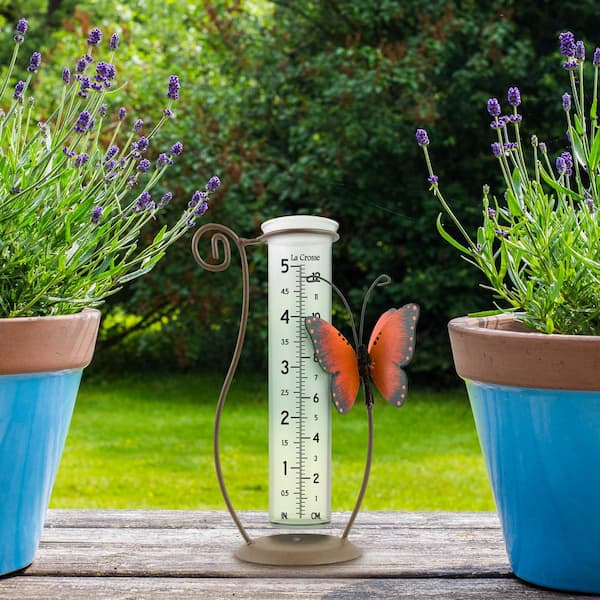Do It Yourself Rainfall Gauge: Straightforward Actions to Make Your Own
Creating your own DIY rain scale is a straightforward and efficient method to videotape and measure precipitation. With just a few typical products and some fundamental actions, you can conveniently create your very own rainfall scale at home. Allow's obtain begun on making your Do it yourself rain gauge today!
Gather Materials
To start constructing your Do it yourself rainfall gauge, gather all the essential products utilizing an extensive list of items. Having the appropriate products on hand will guarantee the successful production of your rain scale and allow for precise measurements of rains. Gathering these products in advance will certainly enhance the building process and make certain that you have every little thing you need to develop your own Do it yourself rainfall gauge.
Prepare the Container

Mark the Dimension Increments
To precisely measure the quantity of rains, accurately noting the dimension increments on your DIY rainfall gauge is necessary. Without clear and exact markings, it would be tough to identify the exact quantity of rainfall collected in your rainfall gauge. Below are the steps to note the measurement increments on your rain scale.
First, choose on the device of measurement that you want to make use of. The most usual systems for measuring rains are inches and millimeters. As soon as you have picked the unit, make use of a long-term pen or waterproof paint to note the increments on the side of your rain scale. For inches, you can note every quarter inch or every half inch, relying on your preference. For millimeters, you can note every 10 millimeters or every 20 millimeters.
When marking the increments, it is crucial to ensure that they are uniformly spaced and plainly noticeable. Use a ruler or determining tape to ensure accuracy and consistency. In addition, ensure that the markings are resistant to fading or abrading, as exposure to the aspects might cause them to wear away in time.
Place the Rain Scale Outdoors
The rain scale need to be put outdoors to precisely gather rains data. The location official site selected for the rainfall scale need to be open and totally free from any kind of blockages that could potentially impact the dimension of rains. It is important to find a spot that is not obstructed by trees, buildings, or other frameworks that can obstruct the rainfall from getting to the scale. This will certainly make sure that the gathered information is agent of the actual rainfall in the area.
Furthermore, it is vital to position the rain scale on a secure surface, such as a level ground or a sturdy blog post. This will certainly stop any movement or tilting of the scale, which might result in incorrect measurements. It is additionally a good idea to avoid positioning the scale near any type of sources of fabricated water, such as sprinklers or drainage systems, as this can conflict with the precision of the measurements.
Monitor and Document Rainfall Information
Routine monitoring and recording of rains data is crucial for precise data evaluation and interpretation. By tracking rainfall dimensions, you can acquire beneficial insights right into weather condition patterns, environment patterns, and water resource administration. To effectively check and tape-record rains data, it is very important to establish a regular and maintain constant techniques.
First of all, ensure that your rain scale is positioned in an open location away from challenges such as trees or structures that may block rains. Additionally, make certain the rain scale is level and safely anchored to stop any kind of motion that can affect the accuracy of the dimensions.

When taping the rains data, it is necessary to note the day and time of each dimension. Make use of a leader or a gauging stick to figure out the rainfall deepness in pop over to these guys the rainfall scale, and document this information accurately.
To guarantee the accuracy of the measurements, it is recommended to empty the rainfall scale after each recording. This will certainly stop any type of overflow or evaporation from affecting succeeding dimensions.
Final Thought
Finally, developing a DIY rain gauge is a useful and simple means to keep track of and record rains data (The Rain Gauge). By complying with the actions outlined in this write-up, you can quickly collect products, prepare the container, note the measurement increments, and position the rainfall gauge outdoors. Routinely checking and recording rains data can provide useful information for various purposes
Having the appropriate materials on hand will guarantee the effective creation of your rain scale and permit for precise measurements of rains.To accurately determine the amount of rainfall, properly marking the measurement increments on your Do it yourself rain gauge is essential.The rain scale should be put outdoors to properly collect rains information. The location selected for the rainfall scale ought to be open and read the full info here cost-free from any type of blockages that could potentially impact the dimension of rainfall.In final thought, developing a DIY rainfall gauge is a practical and easy method to check and record rainfall data.